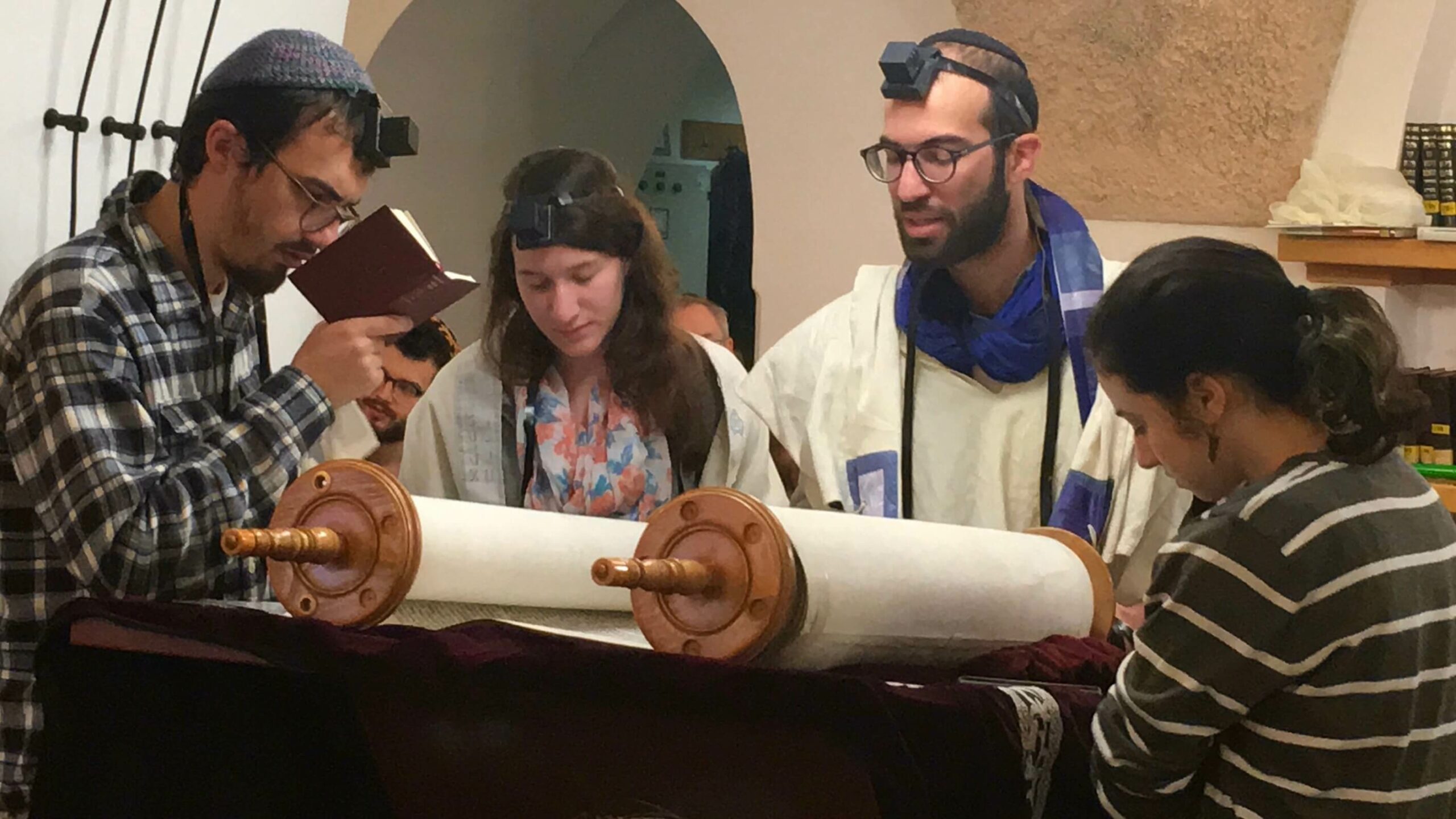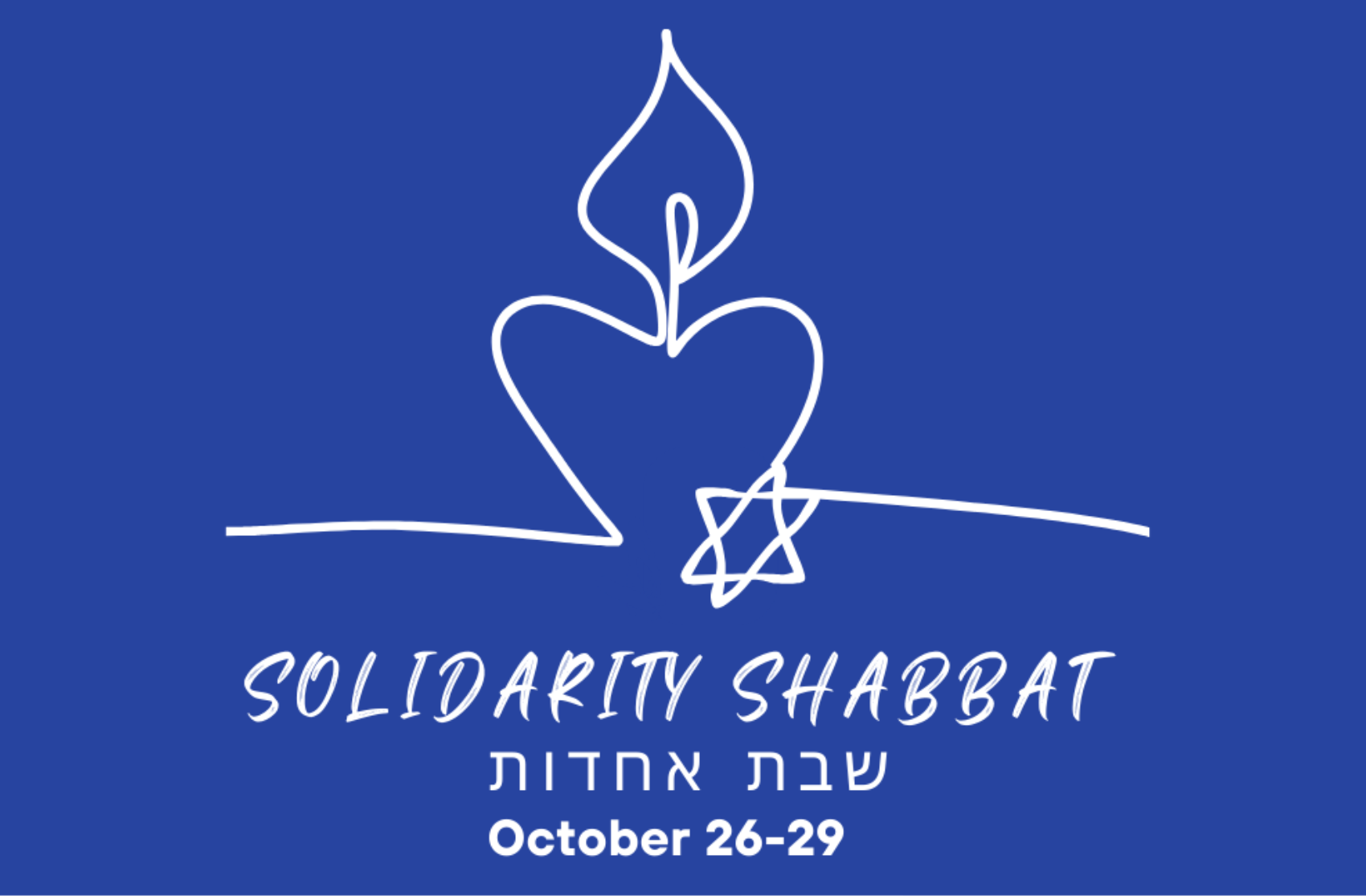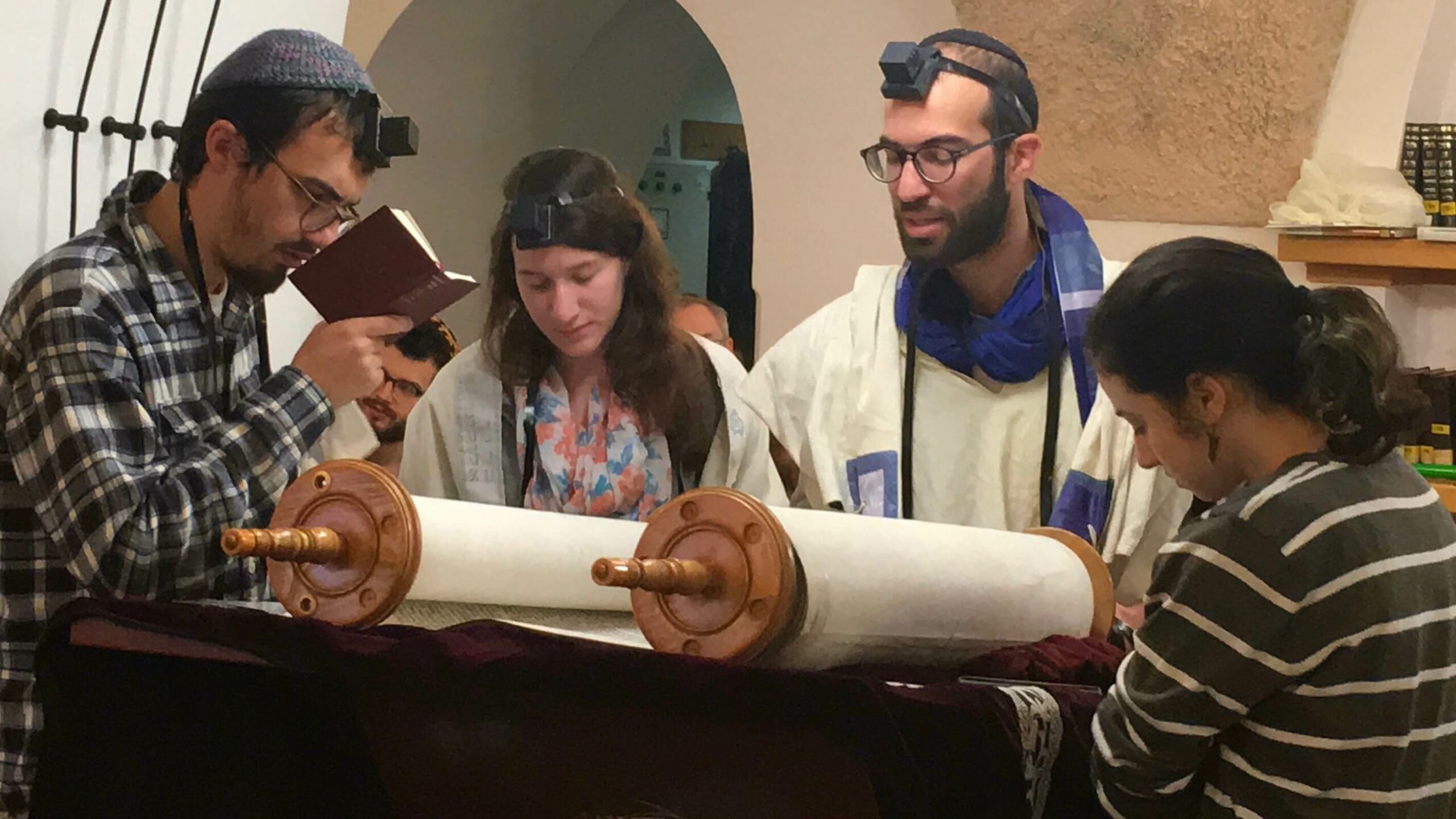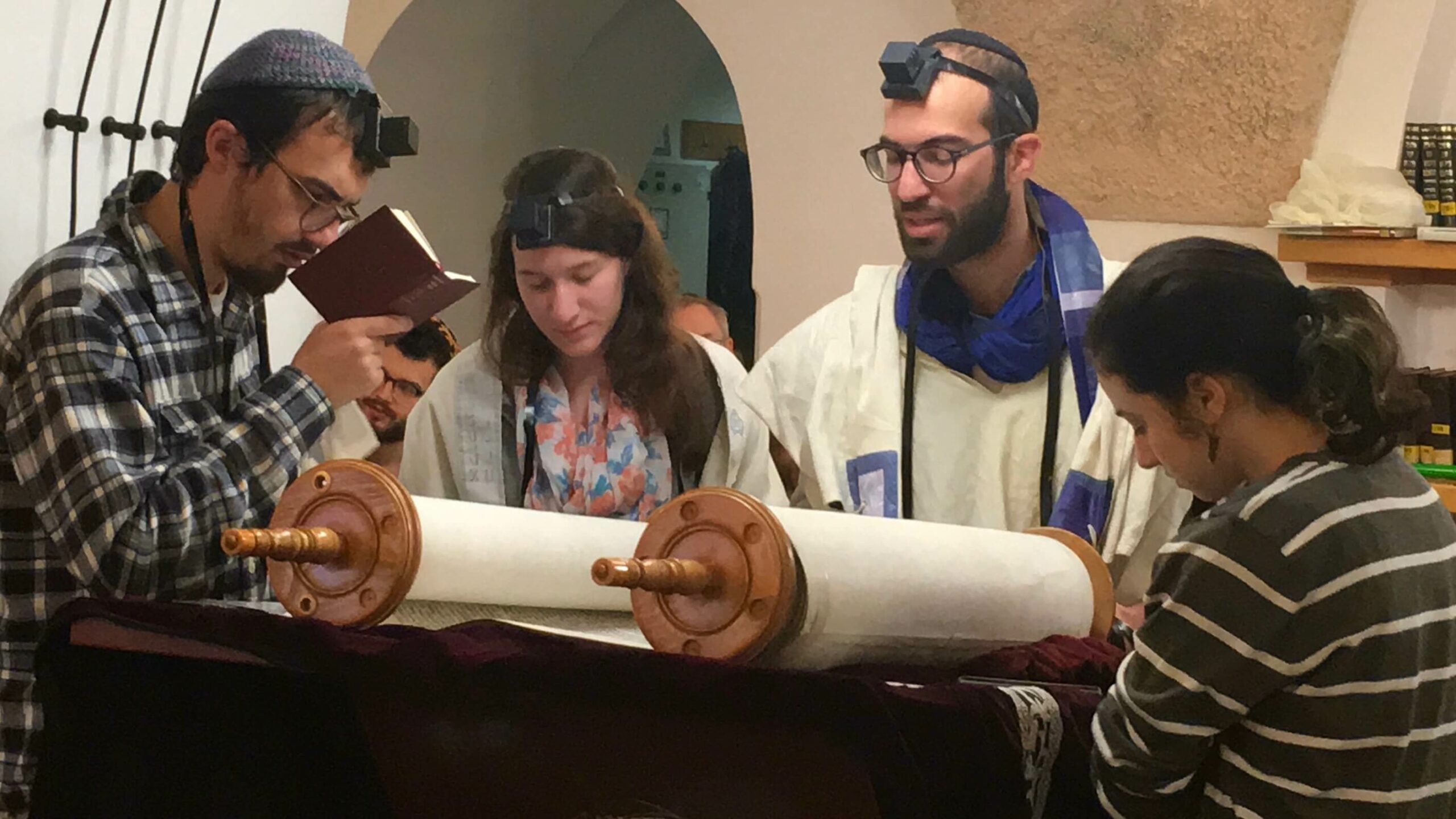

TORAH SPARKS (print friendly version)
Parashat Ki Tetse
August 25, 2018 | 14 Elul 5778
Annual | Deuteronomy 21:10-25:19 (Etz Hayim p. 1112-1136; Hertz p. 840-857)
Triennial | Deuteronomy 23:8-24:13 (Etz Hayim p. 1123-1130; Hertz p. 847-822)
Haftarah | Isaiah 54:1-10 + 54:11-55:5 (Etz Hayim p. 1137-1139; Hertz p. 857-858)
D’var Torah: A Rabbinic #metoo Moment
Rabbi Shoshana Cohen, Conservative Yeshiva Faculty
This week’s parashah begins with the law of the eishet yefat to’ar – the “beautiful woman” captured in war. According to Devarim 21:10-14, if a man is at war and he sees among the captives a woman whom he desires, he may take her into his home and make her his wife or, perhaps more precisely, his concubine. Nevertheless, he may not fulfill his desire for her immediately – she is to cut her hair and nails and mourn her parents for a month. And if, after having sex with her, he decides not to continue their relationship, he is prohibited from selling her to anyone else and must release her.
Even the earliest interpreters of this text debated whether this text is: a) a totally legitimate way for foreign woman to enter the Jewish people, b) a way of channeling and limiting what the authors see as an almost uncontrollable male sexual desire, or c) institutionalized rape. These interpretations are not mutually exclusive, but interpretations tend to divide along the line of those who see this text a concession vs. those who see it as an ideal.
It is important to note here that the Torah does not seem to have any notion of what we would today call rape. The story of the “rape of Dinah” in Bereishit is actually quite ambiguous. It is unclear whether Dinah and Shechem’s relationship was consensual. The response is complicated – Shechem himself seems to think he should be able to marry Dinah, Jacob consents to the union and Shimon and Levi exact vengeance. When the laws of adultery and rape are given later in our parashah in Devarim 22:22-29, the major offense is having sex with a woman who is connected to another man. If the woman is married then both the woman and the man die (22). If the woman is completely unattached then the man must pay her father, but they can be together (28-29). The question of consent is only raised when the connection to another man is not strong, as in the case of the betrothed virgin (23-27).
The only text in the Bible where it is clear that the authors see the event as what we nowadays call rape is the story of Tamar, the daughter of David. Towards the end of David’s reign, as his household begins to unravel, his first born son, Amnon, rapes his sister, Tamar (II Samuel 13). Tamar suffers greatly from the actions of Amnon and he is condemned for his cunning and cruelty in the way he entraps and violently rapes her.
Tractate Sanhedrin (21a) suggests that Tamar is the daughter of an eishet yefat to’ar taken by David in war! This is significant in two ways. First, the Talmud suggests Tamar, as an outsider without strong family connections on her mother’s side, and with the stigma of being a foreign woman, was predictably vulnerable to sexual violence. Second, the Talmud may be suggesting that a predilection toward sexual violence runs in the family – like father, like son. In any case, the Talmud, by drawing this connection, renders the story of the beautiful [captive] woman in Devarim 21:10-14 far less ambiguous. It directs us to see what happens to her as a forced sexual encounter, one whose trauma will reverberate in the family for years.
The Biblical story of Tamar ends with her alone for the rest of her life. Though she is ultimately avenged by her brother Absalom, his reasons for killing Amnon have more to do with his own pursuit of the throne than concern for his sister’s honor. The Talmud, however, claims that this incident spurred a moment of textual activism on the part of the Rabbis. After that incident, the Rabbis legislated that it is forbidden for a man to be alone with a woman at all, whether she is someone technically available to him or not. The prohibition of yihud (literally “being alone”) originally applied only to a man and a woman for whom sexual relations would be halachically prohibited, the clearest example being a man and another man’s wife. Its purpose was only to prevent halachically prohibited sex. But after the Tamar incident, claims the Talmud, there was an expansion of the prohibition of yihud to include a pnuya (an available woman), with whom sexual relations would not be prohibited. In effect, we may read the treatment of the Tamar incident as a #metoo moment for the Rabbis, in which they acknowledge the existence of sexually predatory behavior, and seek to protect victims. Though yihud carries with it its own issues, and the core concerns of the Rabbis as to what makes “good sex” maybe be different than ours, these “protections” can be seen as akin to leaving the door open when meeting with a student or colleague. We are pushed to think about ways in which legislation, in addition to a shift in cultural norms must be used to protect victims of sexual violence and impropriety.
Parashat Ki Tetse Self-Study
Vered Hollander-Goldfarb, Conservative Yeshiva Faculty
Those who count mitzvot claim that this parashah has more mitzvot than any other in the Torah. Most of the laws are from the sphere of our interactions with other people such as family, workers, or other nations.
1) 21:22-23 brings a case of a person who was condemned by the court to die by hanging. The Torah warns not to leave his body there for long, but rather bury him that day. Why might the authorities leave him hanging, and what do you think is the message that Torah sends by this mitzvah?
2) Farm animals were used for many things, among them plowing the field. We are warned not to plow using a donkey and an ox together (22:10). Why do you think that the Torah gave this prohibition?
3) There are several laws pertaining to conduct during war. One of them seems to be a demand to cover up any excrement (23:13-15). Why might this make good sense? The Torah adds that God is with you, and so you have to keep your camp holy. Why might this incentive have been added?
4) If you swear to give something to God, you must fulfill your commitment in a timely manner (23:22-24). What is better: to promise but fail, or not to promise? How to you relate to promises and oaths?
5) If you are going through someone’s vineyard, you may eat your fill, but not put any grapes in your bag (23:25). What is the logic behind this law? What is the greater understanding of ownership that underlies this mitzvah?
D’var Haftarah: A Hunger for Torah
Rabbi Mordechai Silverstein, Conservative Yeshiva Faculty
Isaiah offers the world to partake of a divine feast for free, no charge: “Ho, all who are thirsty, come for water, even if you have no money; come, buy food and eat: buy food without money, wine and food without cost.” (55:1) The feast being offered is a metaphoric representation of God’s word, its truth being contrasted with what the rest of the world had to offer. God’s word, unlike other messages, offered spiritual nourishment and eventual redemption.
The rabbinic sages ultimately associated the imagery of this prophecy with Torah, likening the absence of Torah study to thirst and hunger for the precious commodities of water and food. This became the scriptural basis for why we read the Torah publicly every three days:
[The Talmud asserts in a Baraita that Ezra (one of the major leaders of the Jewish people at the time of the return from Babylonian exile) legislated] that “the people should read [the Torah publicly] on Mondays and Thursdays.’
[The Talmud challenges:] But was this ordained by Ezra? Was this not ordained even before him? For it was taught [regarding the sojourn in the desert: ‘And they went three days in the wilderness and found no water’ (Exodus 15:22), upon which those who expound verses metaphorically said: water can only mean Torah, as it says: ‘Ho, all who are thirsty, come for water.’ (Isaiah 55:1) [The verse from Exodus thus] means that after going three days without Torah they became exhausted. The prophets among them thereupon rose and enacted that they should publicly read the Torah on Sabbath, make a break on Sunday, read again on Monday, make a break again on Tuesday and Wednesday, read again on Thursday and then make a break on Friday so that they should not be kept for three days without Torah”
– Bava Kamma 82a
This drasha is, of course, hagiographical, namely, it is a story used to explain the origins (etiology) of the practice of reading the Torah on Mondays and Thursday. Beyond that, it tells us that our tradition sees the study of Torah as a communal activity, a source of vitality and life for the Jewish people. It is a crucial element in establishing who we are. It is not a particular penchant for humor or East European cured meats or fish, humus or shakshuka that make a Jew a Jew. It is an identity based on something spiritually substantial. One who has truly experienced Judaism is left with an unquenchable thirst and insatiable hunger for its words.








